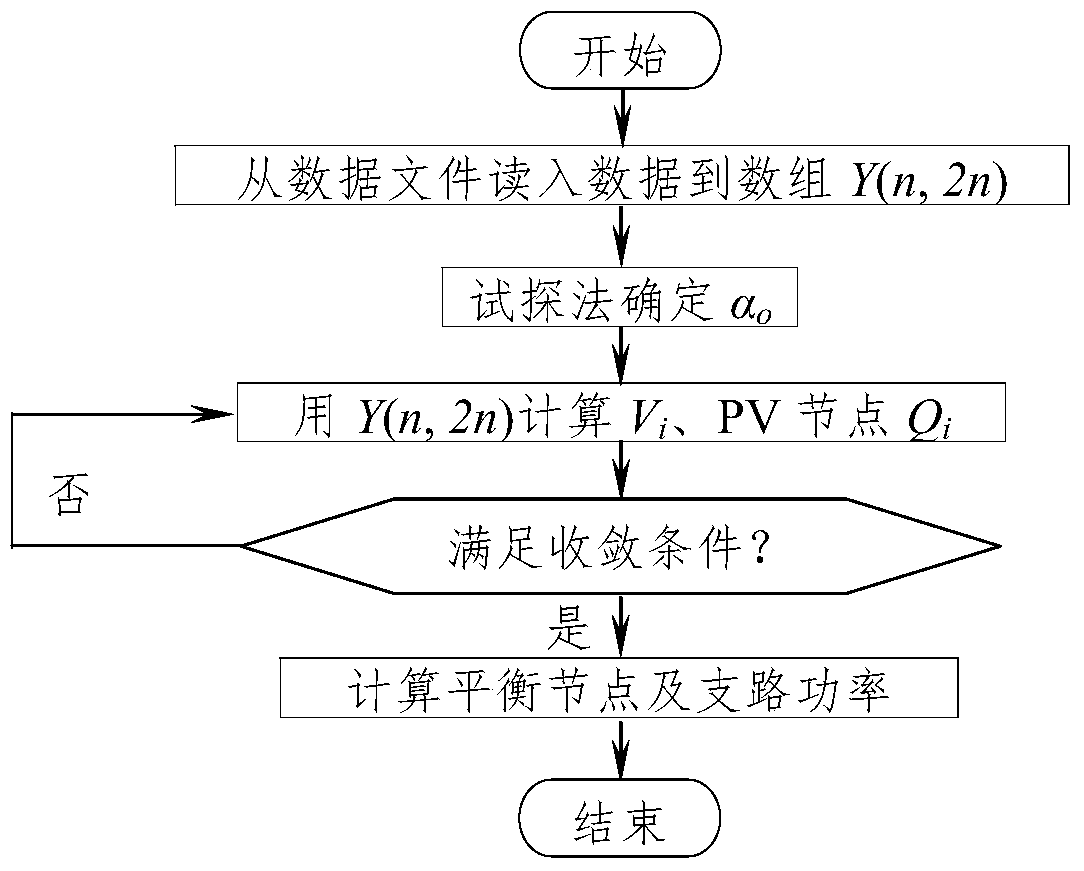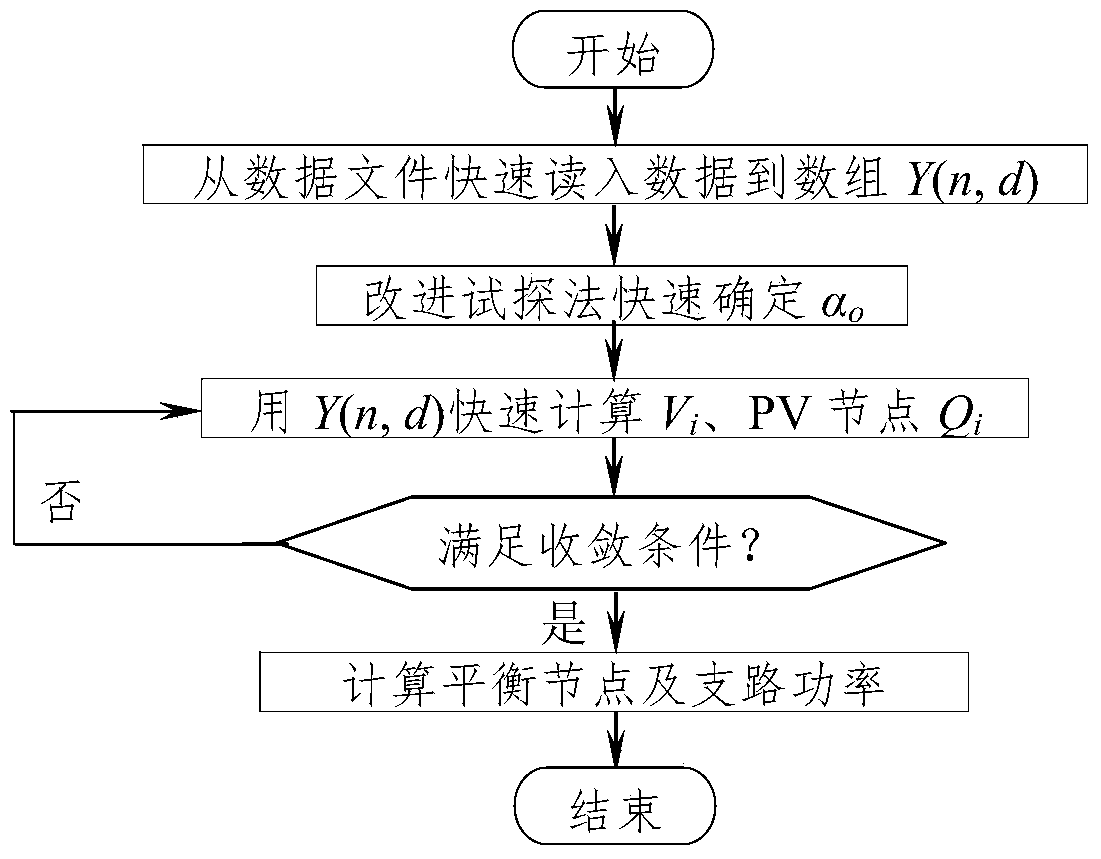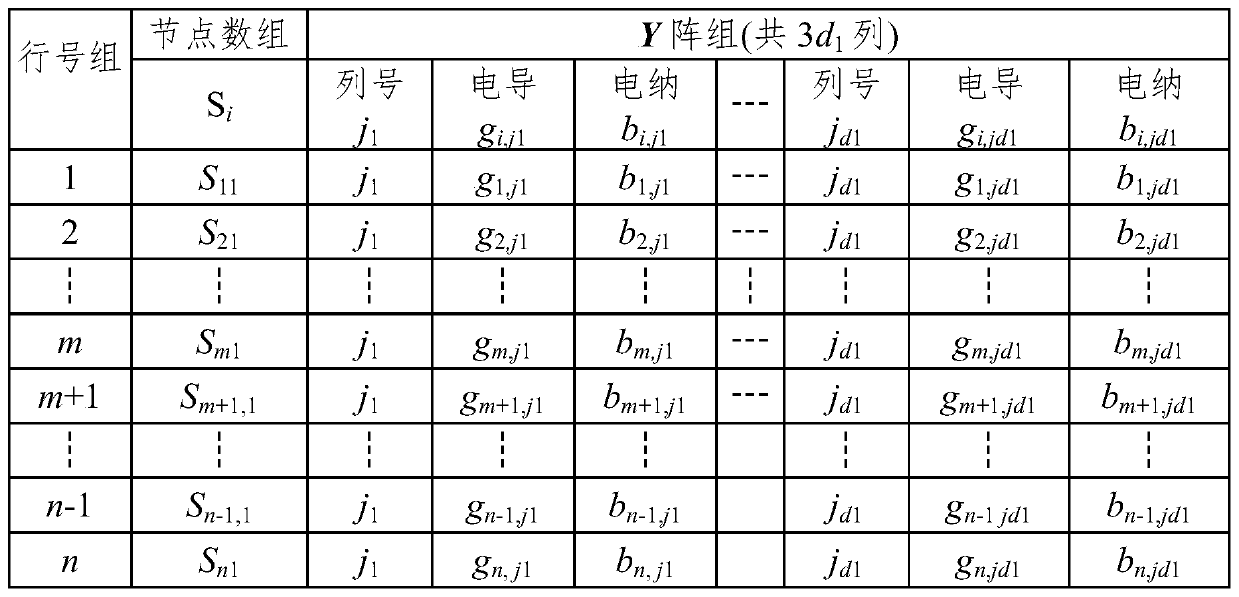A Fast Gauss-Seidel Power Flow Algorithm Based on Sparse Technology
A technology of power system and technology, which is applied in the field of power system analysis and calculation, can solve the problems of cumbersome determination of the optimal acceleration factor, unsatisfactory effect of traditional sparse technology, unsatisfactory calculation effect, etc., to reduce the amount of calculation, storage unit and The effects of reduced reading time and improved computing efficiency
- Summary
- Abstract
- Description
- Claims
- Application Information
AI Technical Summary
Problems solved by technology
Method used
Image
Examples
Embodiment Construction
[0043] The invention will be further illustrated by the following examples.
[0044] Example. Respectively using traditional Gaussian method power flow and the present invention to IEEE-30, -57, -118 node systems when the acceleration factor is 1 and the best acceleration factor α o In the case of , compare the read data file, power flow iteration time and total time. The comparison results are shown in Table 3.
[0045] Table 3 compares the reading data files, power flow iteration time and total time of each IEEE system
[0046]
[0047] t 1 : The average time for traditional methods to read Y(n,2n) data files.
[0048] t 2 : The average time for the present invention to read Y(n,d) data files.
[0049] α, α o : Acceleration factor (α=1), optimal acceleration factor (α=α o ).
[0050] INs: The number of power flow calculation iterations.
[0051] t' 1 : the traditional method α=1 and α=α o , the average time of power flow iteration.
[0052] t' 2 : the presen...
PUM
 Login to View More
Login to View More Abstract
Description
Claims
Application Information
 Login to View More
Login to View More - R&D
- Intellectual Property
- Life Sciences
- Materials
- Tech Scout
- Unparalleled Data Quality
- Higher Quality Content
- 60% Fewer Hallucinations
Browse by: Latest US Patents, China's latest patents, Technical Efficacy Thesaurus, Application Domain, Technology Topic, Popular Technical Reports.
© 2025 PatSnap. All rights reserved.Legal|Privacy policy|Modern Slavery Act Transparency Statement|Sitemap|About US| Contact US: help@patsnap.com



